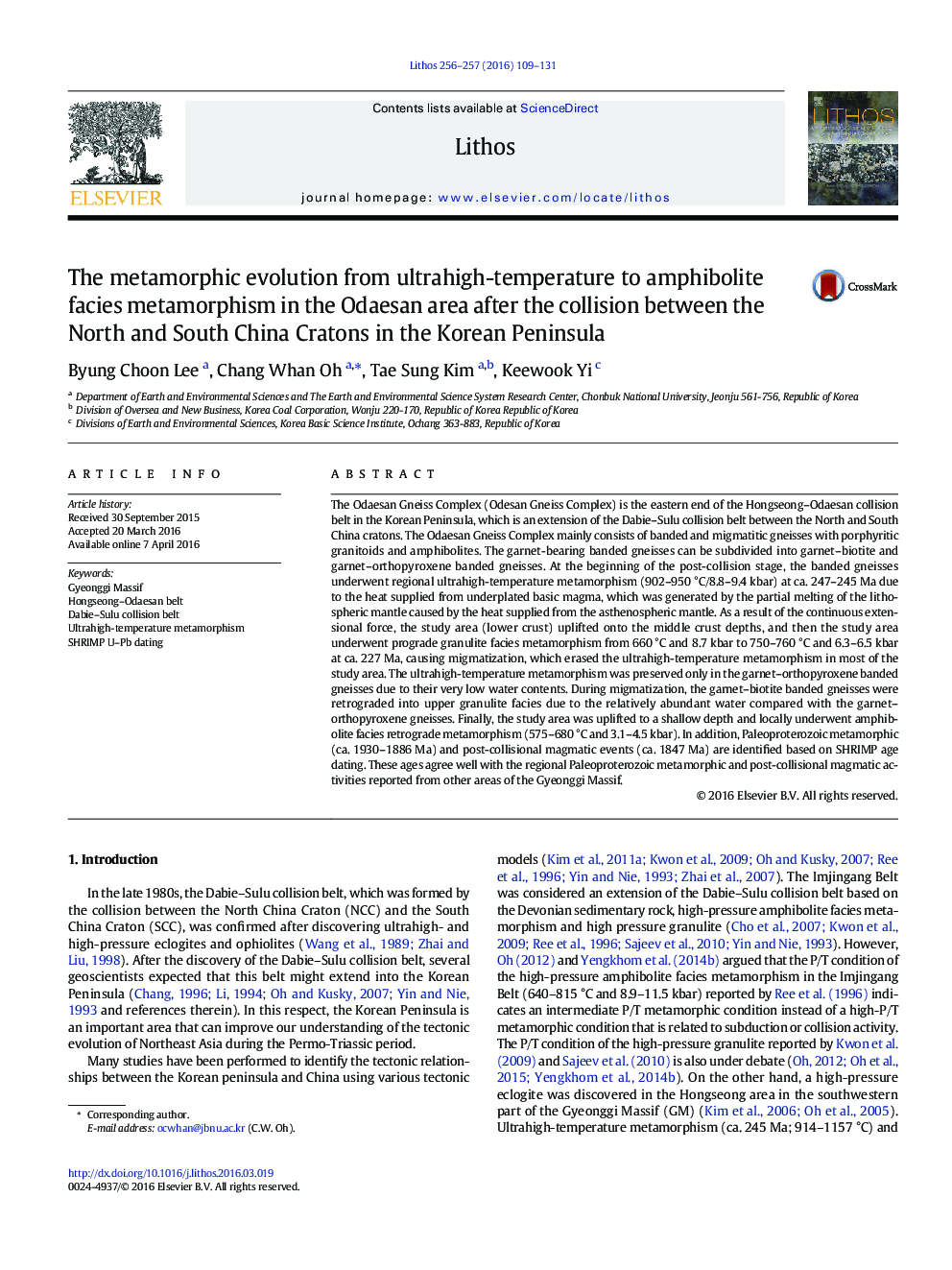| کد مقاله | کد نشریه | سال انتشار | مقاله انگلیسی | نسخه تمام متن |
|---|---|---|---|---|
| 4715491 | 1638646 | 2016 | 23 صفحه PDF | دانلود رایگان |

• Study area underwent regional ultra-high-temperature metamorphism at 247–245 Ma.
• UHT metamorphism occurred in the post-collision tectonic setting.
• UHT metamorphism was followed by upper amphibolite facies migmatization at 227 Ma.
The Odaesan Gneiss Complex (Odesan Gneiss Complex) is the eastern end of the Hongseong–Odaesan collision belt in the Korean Peninsula, which is an extension of the Dabie–Sulu collision belt between the North and South China cratons. The Odaesan Gneiss Complex mainly consists of banded and migmatitic gneisses with porphyritic granitoids and amphibolites. The garnet-bearing banded gneisses can be subdivided into garnet–biotite and garnet–orthopyroxene banded gneisses. At the beginning of the post-collision stage, the banded gneisses underwent regional ultrahigh-temperature metamorphism (902–950 °C/8.8–9.4 kbar) at ca. 247–245 Ma due to the heat supplied from underplated basic magma, which was generated by the partial melting of the lithospheric mantle caused by the heat supplied from the asthenospheric mantle. As a result of the continuous extensional force, the study area (lower crust) uplifted onto the middle crust depths, and then the study area underwent prograde granulite facies metamorphism from 660 °C and 8.7 kbar to 750–760 °C and 6.3–6.5 kbar at ca. 227 Ma, causing migmatization, which erased the ultrahigh-temperature metamorphism in most of the study area. The ultrahigh-temperature metamorphism was preserved only in the garnet–orthopyroxene banded gneisses due to their very low water contents. During migmatization, the garnet–biotite banded gneisses were retrograded into upper granulite facies due to the relatively abundant water compared with the garnet–orthopyroxene gneisses. Finally, the study area was uplifted to a shallow depth and locally underwent amphibolite facies retrograde metamorphism (575–680 °C and 3.1–4.5 kbar). In addition, Paleoproterozoic metamorphic (ca. 1930–1886 Ma) and post-collisional magmatic events (ca. 1847 Ma) are identified based on SHRIMP age dating. These ages agree well with the regional Paleoproterozoic metamorphic and post-collisional magmatic activities reported from other areas of the Gyeonggi Massif.
Journal: Lithos - Volumes 256–257, July 2016, Pages 109–131